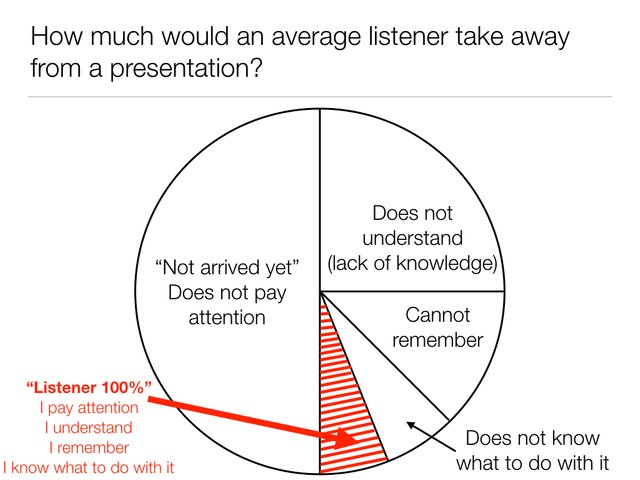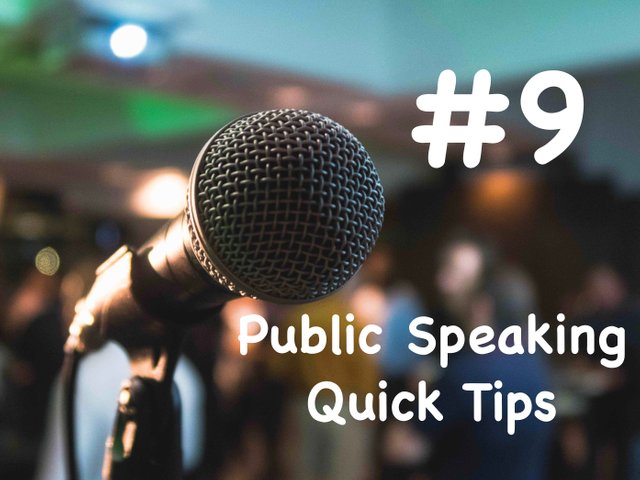Public Speaking Quick Tips #9 - Rule of fast forgetting
If they listen, they will understand you.
If they understand you, they will accept and follow you.
Being able to communicate your ideas clearly in a presentation, putting forward your firm arguments during a group meeting as well as talking in a persuasive manner about your product or service are essential to be successful in any business today. All these require confidence and strong public speaking skills. While only a few people are born with this talent, there is still hope for the rest of us, as these competencies can be easily developed. In this series I will try to give "short-cuts", some easy-to-follow tips to increase your impact as a public speaker.
Rule of fast forgetting
I am often asked how much people should remember from the contents of an average presentation. Well, it largely depends on the quality of the speech but there are a few guidelines that we could follow on this path.
I like to demonstrate it with the Rule of fast forgetting, here is a little drawing I have made about it:

Let's take a look at it slice by slice:
"Not arrived yet"
Many people check their mobiles, keeps wondering about upcoming duties or the events of the previous time period... all in all they have not arrived yet. They are there but only physically, their mind is somewhere else. They are not listening yet, their attention is not on the speaker. Basically, half of our content is discarded because of attention issues. Even if they start to pay attention, we can see that after a few minutes (or even seconds) their attention is gone.
Therefore the start of the presentation is essential: do not start your main content until you have the attention of your audience. Tell a story, a joke, a surprising statistics, initiate interaction etc. You have to figure out something to make them arrive.
Does not understand
Our memory glues new information to the ones already stored in it. If the presenter is talking about a topic I do not have any knowledge or experience about, then I cannot imagine what's going on, there is no solid foundation for this new pieces of information, therefore it will be discarded. Approximately 25% of the content presented is gone because it is not tailored to the knowledge level of the audience.
Try to find out in advance how much your audience already knows about the topic and try to level your vocabulary, your examples to that. Use analogies, try to grab examples from areas they are familiar with. It is essential that they could IMAGINE what you are talking about. So try to present the topic in their language.
Cannot remember
Our short term memory can store only 3-7 units at a time. This is our "working memory", things can be transferred to the long term memory from here. But in order to be able to do that we have to do something with the information stored: repeat it a couple of times, process it (by trying to find an example or by imagining it), etc.
It is essential that we present the information in "digestable" doses: structuring the content around triads for example is quite a lean and safe way of building up a presentation as I was already mentioning it here). Repeating the most important facts or arguments is also very helpful, or presenting the same information in multiple ways: with a story, with a picture with some pure data, etc.
Does not know what to do with it
If the content is not relevant to us, we will not listen carefully. We need to know how do we need to use the information or why we are receiving it in order to be able to open our ears.
Always start the presentation by stating how your topic relates to your audience and finish with a call for action. They need to understand how they can use the information received.
Well, it is not the proportions that are important on the chart above but the reasons why we are unable to remember what has been said. A good presenter
- can get and maintain attention,
- will adapt the content to the knowledge and experiences of the audience,
- apply a lean and simple structure and
- most importantly makes the speech relevant
If you are interested in the previous parts of this series, you can find them here:
